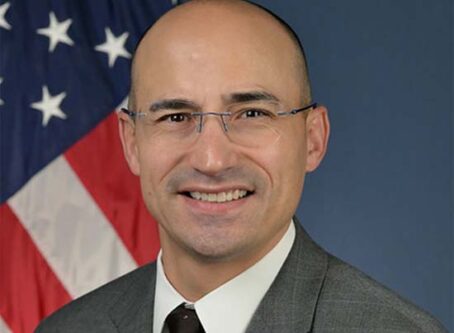FMCSA to ease requirements in pilot program for under-21 drivers
As directed by Congress, inward-facing cameras will no longer be required for participation in FMCSA’s Safe Driver Apprenticeship Pilot Program for under-21 drivers.
In a notice scheduled to be published in the Federal Register on Tuesday, May 14, the Federal Motor Carrier Safety Administration announced revisions to the pilot program’s requirements for motor carriers.
The revisions are aimed at making it easier for motor carriers and 18-, 19- and 20-year-old drivers to sign up for the program after an extremely underwhelming start.
Motor carriers will no longer be required to install or use inward-facing cameras to participate in the pilot program. In addition, carriers will not be required to obtain a Registered Apprenticeship number from the Department of Labor.
The under-21 pilot program was launched in 2022 based on the premise that there is a shortage of truck drivers. Current regulations require truck drivers who cross state lines to be at least 21 years old. In-state commercial drivers can start at 18.
In April, it was reported that FMCSA had received only 113 applications from motor carriers. Only 34 of those carriers had been fully approved to participate in the program. According to the report, 36 applications were rejected for failing to complete registration. The program was set up to accommodate 1,000 motor carriers and 3,000 under-21 drivers.
The American Trucking Associations blamed the lack of participation on “extraneous” U.S. Department of Transportation requirements.
That led Congress to pass a provision in March to eliminate some of the requirements originally included in the pilot program, which is set to expire in October 2025.
Opposition to under-21 pilot program
The Owner-Operator Independent Drivers Association, which refutes claims from ATA and others that there is a driver shortage, has opposed any efforts to lower the interstate driving age.
Jay Grimes, OOIDA’s director of federal affairs, said the problem for large carriers isn’t a driver shortage. Instead, trucking companies struggle to keep drivers due to low wages and poor working conditions.
“OOIDA opposed legislative provisions that no longer assure that younger drivers will participate in the Department of Labor’s Registered Apprenticeship program as part of FMCSA’s under-21 pilot program,” Grimes said. “The DOL apprenticeship program has ensured fair wages, meaningful instruction and safety across various professions, and it was not too long ago that large carriers called it the ‘gold standard’ of training. The lack of enthusiasm for the under-21 pilot program has nothing to do with DOL apprenticeships or inward-facing cameras but is another indication that the industry must prioritize driver retention. This includes addressing inadequate pay, poor working conditions, minimal training requirements and truck parking, among other concerns.”
Opponents of the pilot program also cite statistics that commercial motor vehicle drivers ages 19 and 20 are six times more likely to be involved in fatal crashes than those who are 21 or older.
“The Truck Safety Coalition remains vehemently opposed to the apprenticeship pilot program and again recommends that the Department of Transportation secretary terminate the program immediately,” the group wrote to FMCSA last year. LL









